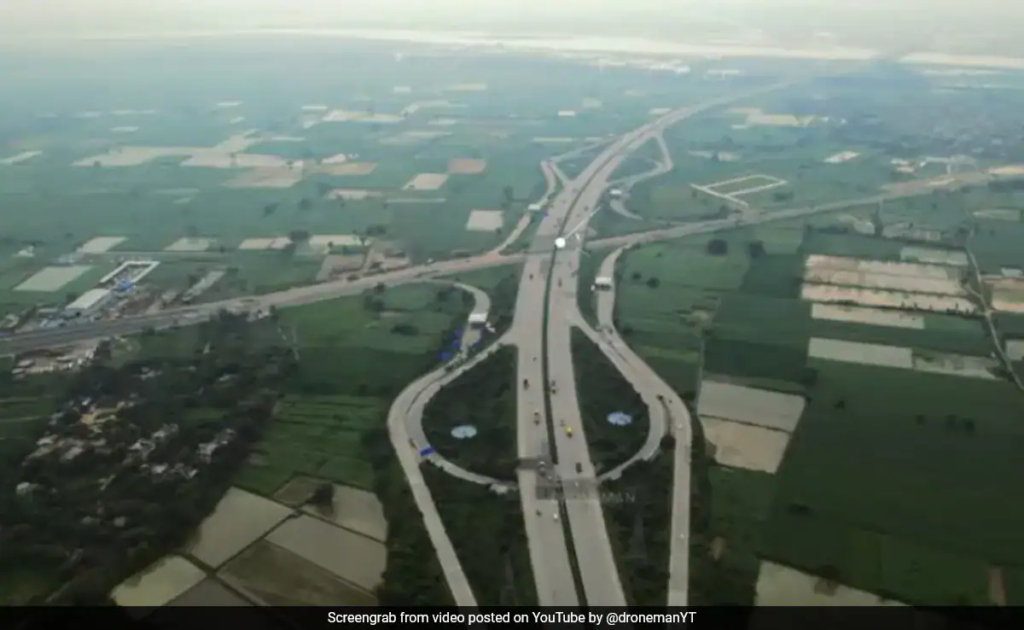Balancing Infrastructure Great Development
Balancing-In recent years, the intersection between infrastructural development and environmental conservation has become increasingly contentious. One such instance is the construction of the Delhi-Dehradun Expressway, where the need for enhanced connectivity clashes with the imperative of preserving green cover. This article delves into the intricacies of this project, examining the toll it has taken on the region’s trees and the efforts made towards compensatory afforestation.

Balancing-According to recent findings obtained through the Right To Information (RTI) Act, a staggering 7,575 trees have been felled along a 16-kilometer stretch of the Delhi-Dehradun Expressway. The National Highways Authority of India (NHAI) disclosed that of these trees, 4,983 were located in Uttarakhand, while 2,592 stood in Uttar Pradesh. These figures underscore the significant environmental impact of large-scale infrastructural undertakings.
Balancing-In response to queries raised by Noida-based social activist Amit Gupta, pertinent details regarding the fate of the uprooted trees and plans for their replacement have emerged. Pankaj Kumar Mourya, the designated public information officer-cum-project director, revealed that 155 trees have been successfully translocated in Uttar Pradesh, with 121 of them thriving post-translocation. This translocation effort represents an attempt to mitigate the environmental repercussions of tree removal.
Balancing-To offset the loss of greenery, a compensatory afforestation scheme has been devised, with the forest departments of Uttar Pradesh and Uttarakhand tasked with planting a staggering 1,76,050 trees. The NHAI has allocated a total of ₹ 3,60,69,780 towards compensatory afforestation, underscoring the financial commitment to environmental conservation in the wake of infrastructural development.
Balancing-The Delhi-Dehradun Expressway, a pivotal project under the aegis of the Ministry of Road Transport and Highways (MoRTH), aims to revolutionize connectivity between the national capital and Dehradun. Spanning 212 kilometers and boasting six lanes, this Greenfield Access Controlled Expressway represents a significant investment, projected at ₹ 12,000 crore. Once completed, it promises to slash travel time between Delhi and Dehradun to a mere two-and-a-half hours, offering a boon to commuters and facilitating economic growth in the region.
Balancing-The expressway is divided into four sections, commencing from the Delhi-Mumbai Expressway near Akshardham in Delhi and traversing through various locales including Shastri Park, Khajuri Khas, and Saharanpur, before culminating in Dehradun, Uttarakhand. Notably, the project incorporates a 340-meter-long three-lane tunnel at Datkali, Dehradun, indicative of the engineering marvels integral to its execution.
In a bid to harmonize infrastructural advancement with ecological preservation, the MoRTH has integrated several environmental safeguards into the project design. Noteworthy provisions include the preservation of wildlife corridors, with a designated safe passage for fauna along the Ganeshpur-Dehradun route. Additionally, the inclusion of twelve kilometers of elevated road, numerous animal underpasses, bridges, and vehicular passageways underscores a commitment to minimizing ecological disruption.
Furthermore, the project encompasses an extensive network of vehicular underpasses, bridges, and bus shelters, aimed at optimizing traffic flow and ensuring the safety of commuters. With 76 kilometers of service roads and 29 kilometers of elevated pathways, the expressway is designed to enhance accessibility while minimizing environmental impact.
In conclusion, the construction of the Delhi-Dehradun Expressway epitomizes the delicate balance between infrastructural progress and environmental stewardship. While the felling of thousands of trees underscores the ecological toll of such endeavors, concerted efforts towards compensatory afforestation and the incorporation of environmental safeguards signify a commitment to mitigating adverse impacts. As this project nears completion, it serves as a poignant reminder of the imperative to tread cautiously in the pursuit of development, ensuring that progress is not achieved at the expense of our natural heritage.

[…] the Storm-In the wake of the recent collapse of the Francis Scott Key Bridge, experts are raising concerns about the vulnerability of other […]